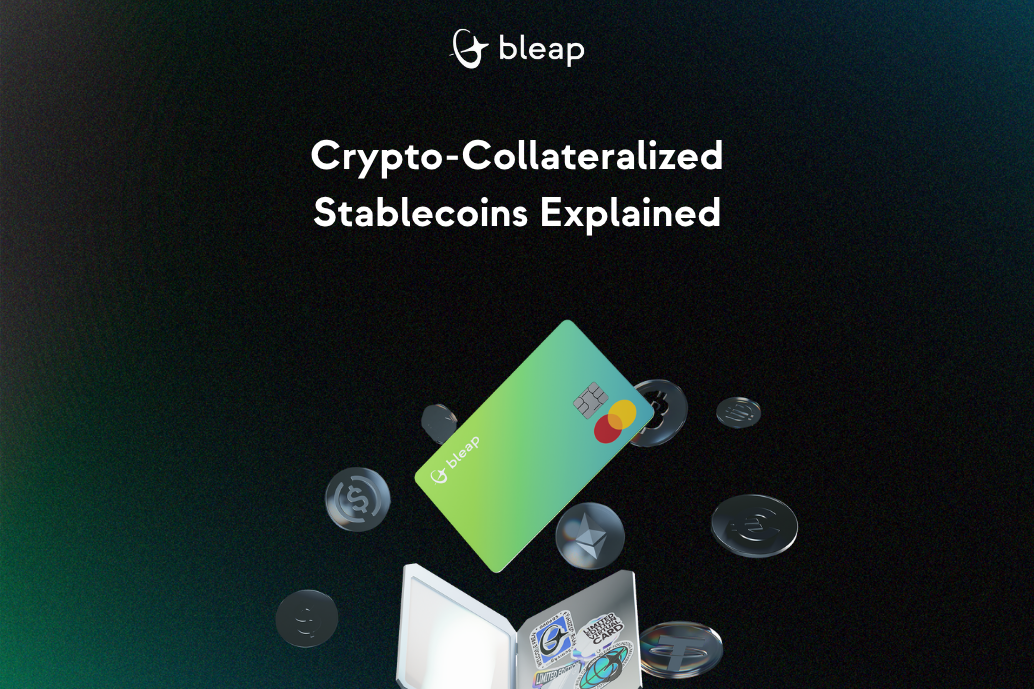
Stablecoins and DeFi investments carry risks, including volatility, smart contract bugs, and regulatory uncertainty. This content is for educational purposes only and does not constitute financial advice. Always research before using decentralized protocols.
A crypto-collateralized stablecoin is a decentralized digital currency backed by other cryptocurrencies as collateral.
To maintain price stability (usually around $1), it uses over-collateralization, locking more crypto value in reserves than the amount of stablecoins issued.
Crypto-collateralized stablecoins (also known as crypto-backed stablecoins) represent a class of decentralized stablecoins secured by digital assets instead of fiat money.
When users want to mint new tokens, they lock crypto (e.g., ETH, WBTC) into a smart contract vault. The system then issues fewer stablecoins than the total collateral value to preserve solvency.
This design removes intermediaries, there’s no bank custody or corporate treasury, and relies purely on transparent, on-chain code.
Over-collateralization is what keeps these stablecoins stable.
If you deposit $1,500 worth of ETH to mint $1,000 worth of DAI, your collateralization ratio is 150%.
Here’s how it works:
According to DeFiLlama, MakerDAO alone secures over $5 billion in collateral for DAI, demonstrating the scalability and reliability of this model.
Crypto-collateralized stablecoins power the entire decentralized finance ecosystem.
They are the backbone of lending, yield farming, and on-chain savings.
In DeFi:
Without them, decentralized economies couldn’t function reliably, they are the “stable rails” of blockchain finance.
Crypto-backed stablecoins can be used in multiple ways:
Want to manage stablecoins securely?
Bleap’s MPC wallet ensures your assets are fully under your control, no seed phrases, no custodians.
These features combine to make crypto-backed stablecoins one of the most transparent, secure, and censorship-resistant instruments in DeFi.
Tip: Store stablecoins in a non-custodial MPC wallet like Bleap.
It distributes key access securely across devices, eliminating single points of failure.
They are considered among the safest decentralized stablecoins, provided collateral remains sufficient.
Systems like MakerDAO and Liquity have proven resilient through multiple bear markets.
Still, safety depends on:
For most users, storing assets in a non-custodial wallet with MPC technology (e.g., Bleap) offers institutional-grade protection without sacrificing usability.
A decentralized stablecoin backed by other cryptocurrencies. It maintains value through over-collateralization and smart contracts.
It ensures that even if collateral falls, liquidation mechanisms keep the token fully backed and stable.
Yes. DAI is issued by MakerDAO and backed by ETH, WBTC, and other crypto assets.
When the value drops below a liquidation threshold, part of the collateral is automatically sold to protect the peg.
Yes. Unlike fiat-backed coins like USDC, they operate entirely on-chain with community governance.
You can store them in Bleap, MetaMask, or hardware wallets, Bleap’s MPC technology adds an extra layer of safety.
Crypto-collateralized stablecoins are the cornerstone of decentralized finance, merging crypto’s transparency with price stability.
They replace trust in institutions with trust in mathematics and code, ensuring open, programmable, and borderless finance.
Whether you use them to save, earn, or trade, they represent the bridge between volatile crypto assets and stable digital value.
Explore stablecoins securely: Manage, earn, and spend with Bleap’s non-custodial MPC wallet, designed for safety, freedom, and transparency.
Features
Improvements
Bug fixes